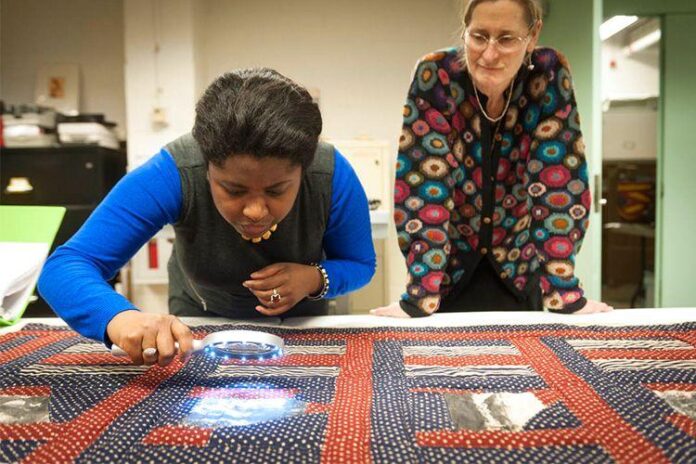As deadly floods surged through Kentucky in the summer of 2022, water breached the warehouse and archival vault of Appalshop, an Appalachian history and culture centre established in 1969 in Whitesburg, more than 200 miles east of Louisville. The cost to recover the audiovisual material is expected to exceed $6m as volunteers and specialists continue work to clean and digitise the damaged collections.
Cultural preservation experts argue disasters and emergency recoveries like this one will only increase in number as the climate crisis worsens, which means institutions need to be better equipped to respond to them. In a new report titled Held in Trust, spearheaded by the Foundation for Advancement in Conservation (FAIC) and the National Endowment for the Humanities (NEH), more than 150 experts across various fields contribute findings on how to make cultural heritage conservation more resilient for a daunting future. The more than 200-page document examines urgent issues including diversity, equity, inclusion and accessibility in the field, and questions of ethics in conservation. But its authors identify climate change as the most significant threat.
“Held in Trust provides the direction and inspiration to seize the opportunities before us and take action now, before even more cultural heritage is lost to the climate crisis and other threats,” Lissa Rosenthal-Yoffe, executive director of the FAIC and the American Institute for Conservation, said in a statement. “We are calling upon everyone who cares about preserving and protecting our irreplaceable cultural heritage to take the next steps with us.”
The project results from four years of collaboration between the FAIC and NEH and involved several issue-focused committees whose members ranged from conservators with the Seattle Museum of Art, San Francisco Museum of Modern Art and the Museum of Modern Art in New York to curators from Fisk University and the Burke Museum of Natural History and Culture in Seattle. Each group outlines specific actions that individuals and institutions in the conservation field can implement in the short to long term.
One important step they urge cultural heritage sites to take is creating an emergency action plan for natural disasters such as wildfires, earthquakes and heat waves. The plans should detail actions for staff to take before, during and after disasters strike. Other immediate needs include conducting risk assessment of heat-stress potential among staff, and health and safety assessments around the hazards of new technology.
“The climate crisis will set the priorities of sites and collections to protect,” the report states. “Some of the unknowns related to climate change are how our buildings and the environments in them will respond and the already changing ecological ranges of pests.” Mould growth, its authors note, will be a prominent problem stemming from the increase in disasters—and one that will affect not only objects but also staff health if improperly managed.
Another critical challenge faced by the preservation field is the environmental cost of the methods and tools used to safeguard objects. For instance, HVAC systems designed for careful temperature control require burning fossil fuels, and certain materials used to care for collections can be toxic.
The report recommends developing greener approaches to the treatment, research, display, storage and transportation of materials, with the goal of meeting sustainable development targets set by the United Nations. These could include piloting cooperative data storage options that would have a lower environmental impact. The report’s authors also note that thinking about environmentally sustainable conservation “provides an excellent avenue to include traditional Indigenous knowledge systems as valuable sources of scientific knowledge”.
FAIC has already begun building resources to help cultural institutions take more steps toward climate action. The foundation plans to launch a website later this year that features interactive maps showing how weather-driven climate risks have impacted historical sites in the past and how they could in the future. The platform will also include guided activities and other educational tools to help users learn more about climate resiliency. Such user-friendly, relatively accessible resources are intended to empower historical sites of different scales to care for cultural heritage in ways that might traditionally be overlooked in the professional field.
The report “seeks to explore a vision of what the future of conservation might look like”, said Shelly C. Lowe, the chair of the NEH, “work that is important not just to the field but to our collective humanity, and our ability not only to preserve objects, but to tell the stories that tie us together”.

























